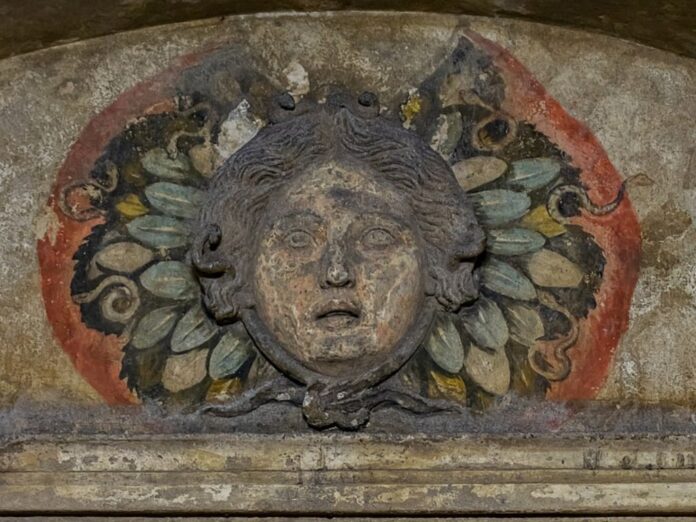Live Science reports that two mosaics have been discovered in niches carved into a circular room at the Antonine Villa in central Italy. The Ancient Roma mosaics were unearthed by a team of researchers led by Timothy Renner and Deborah Chatre Aryamontry of Montclair State University.
The villa was used by members of the Roman Antonine dynasty, who ruled from 138 to 193 AD. Historians suggest that the emperor Commodus, who ruled from 177 to 192 AD, may have had an amphitheater for the training of gladiators on this site.
The researchers explained that the place was heavily damaged by looting, dumping and war. The room where the Ancient Roma mosaics were found is about 69 feet in diameter and is believed to be in the residential area of the villa.
Both Ancient Roma mosaics date back to the second century AD and depict the head of Medusa, a Greek mythological figure whose hair was made from snakes. No Cryptic mosaics were found in the other two niches of the room. The room may have been used as a reception room, although Chatr Aryamontry and Renner are unsure if it had a roof.
In the second century, Medusa heads were a popular decoration in the Roman world, according to researchers. It is not known whether the Cryptic mosaics were specially commissioned by the owners of the villa or whether they were created at the whim of the artist who worked on the room.
As has already been said, the Ancient Roma mosaics depict Medusa, whose hair was known to be made from poisonous snakes, and whose gaze could turn a person to stone when looking into the distance. During the presentation, Timothy Renner, a professor of classics and general humanities at Montclair State University in New Jersey and co-leader of the excavation team, wondered if visitors to the villa at the time were interested in what was going on in the frescoed Medusa’s head.
“Finding those mosaics [was] a pleasant surprise,” Chatr Aryamontri said, noting that many of the villa’s most impressive decorations were removed during the 18th and 19th centuries.

























